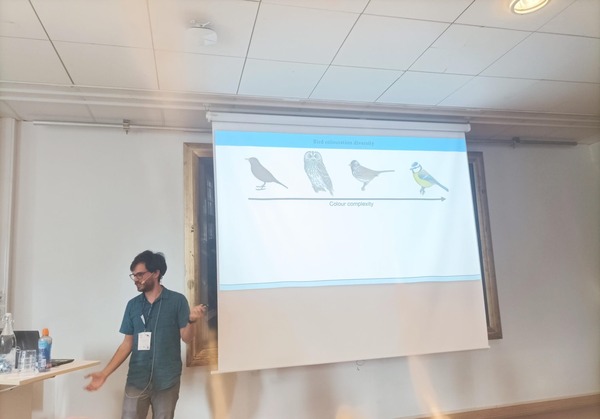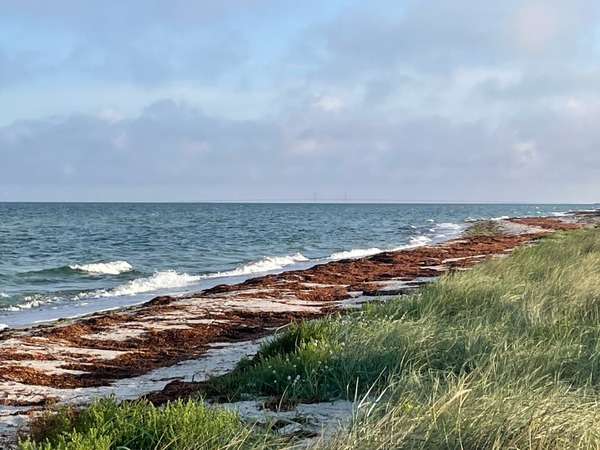The conferences organized by the European Ornithologist Union (EOU) have always been a personal favourite of mine. My involvement with these conferences began back in 2015 at the EOU conference in Badajoz, where I presented the findings from the second chapter of my thesis. Over the years, my research focus has shifted a bit, and I’ve changed my study species twice, nevertheless, my enthusiasm for EOU conferences remains strong.
This year the conference was held in Lund, Sweden, a charming city in the southern part of the country. At the conference, I had the opportunity to share the results of my recent postdoctoral research conducted at CEFE (Montpellier, France) and the University of the Basque Country (Leioa, Spain) which aimed at exploring the evolutionary dynamics of bird colouration.
Specifically, I presented the final objective of my postdoctoral project, focused on examining the relationship between climate, biotic interactions, habitat, and plumage colour complexity within the Paridae family. My presentation was part of a symposium entitled “More than warmer temperatures: How precipitation influences avian responses to environmental change” kindly organized by J. Burant, M. Burgess, and N. Freeman. Overall, the symposium attracted a large audience, was engaging and featured high-quality presentations.

Figure 1 Me during the talk © Mercè Palacios.
In the talk I shared the results of a collaborative project with C. Doutrelant (CEFE-CNRS) and P. B. Pearman (UPV/EHU) where we found that Paridae species in regions with more seasonal climates and higher precipitation tend to have more complex plumage colours. However, as with many scientific studies, the results are complex, so if this topic interests you, I hope to publish our findings soon(ish).
Regarding this project, I’d like to express my gratitude to the Synthesis+ program for funding the research I presented at the symposium, including a month-long visit to the Natural History Museum in Tring (UK), where I collected data on Paridae species’ colouration.

Figure 2 Workplace at NHM in Tring while I was measuring the colours of a bunch of Sultan tits (Melanochlora sultanea), detail on the right © David López-Idiáquez.
Aside from the symposium, the conference offered a rich array of talks and posters covering diverse avian-related topics, including climate change, migration, physiology, microbiomes, and behaviour. It served as an excellent opportunity to stay informed about the latest developments in various scientific fields.
What is a conference but the people?
It is impossible to overstate the significance of networking with colleagues, reuniting with old friends, and making new ones at conferences. In this context, the EOU meeting has given me the opportunity to reconnect with researchers I first encountered during my PhD in Spain and my postdoc in France. It was a pleasure to catch up with them, gaining insights into their recent endeavours and discussing about potential collaborative projects with them.
Finally, perhaps the pinnacle of the conference was the trip to Falsterbo, a birdwatching hotspot in Europe. Spending the day watching birds migrate at this amazing spot was truly awesome

Figure 3 Öresund bridge from Falsterbo. © David López-Idiáquez.
In summary, my participation in the EOU conference in Lund has been a really enriching experience. It has provided me with a platform to present my research, gain insights into the work of others, and connect with friends who share my interests.
I’d like to thank the BOU for awarding me a member travel grant to attend this conference and am eager to attend the next conference that will take place in Bangor in 2025!




